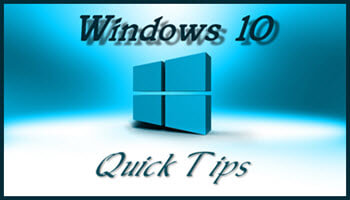Crapware
 We’ve all been there. You find a great little utility on the internet that you can’t live without. You eagerly download it and begin the installation, and what’s this? It wants to also install a copy of Sammy Smith’s Super-sassy Sim demonstration? Or maybe it’s a McAfee browser extension? Well, whatever it is, you don’t want this crapware infesting your computer.
We’ve all been there. You find a great little utility on the internet that you can’t live without. You eagerly download it and begin the installation, and what’s this? It wants to also install a copy of Sammy Smith’s Super-sassy Sim demonstration? Or maybe it’s a McAfee browser extension? Well, whatever it is, you don’t want this crapware infesting your computer.
These nefarious additions are known as PUPs (Possibly Unwanted Programs), PUAs (Possibly Unwanted Applications), and my favorite, PUS (Possibly Unwanted Software). PUS by any other name, stinks the same.
Some shady developers have gotten very sneaky and even the most inveterate computer users will sometimes miss the barely legible “skip” link or the “checked by default” box accepting the offer. Windows Defender has the ability to “defend” you against these little beasts, and in this week’s Quick Tips article we’re going to show you how to make that happen.
Note: If you have a third-party anti-virus program installed, then this tip will be of no use to you since Windows Defender is not activated in these circumstances.
PowerShell
PowerShell is the more powerful cousin of the Command Prompt. We will be using it to set Windows Defender to watch for and block crapware.
Enable/Disable The PUS Blocker
- Use the Windows Key + X to open the WinX Menu
- Choose PowerShell (Admin) (see the note below if PowerShell is not on this menu)
- To enable this setting, type, or copy and paste, the following and hit Enter: Set-MpPreference -PUAProtection 1
- To disable this setting, type, or copy and paste, the following and hit Enter: Set-MpPreference -PUAProtection 0
Note: If PowerShell is not showing up on your WinX Menu, then…
- Click the Windows Start button
- Type PowerShell and right-click the Desktop App entry, and choose Run as administrator
Is It Enabled?
You can confirm the status of this setting. To do so, in the PowerShell window, do the following:
- Type, or copy and paste, the following and hit Enter: $Preferences = Get-MpPreference
- Type, or copy and paste, the following and hit Enter: $Preferences.PUAProtection
If the returned value is 1 (one), then it is enabled; 0 (zero) means it is disabled.
Tip: To paste copied text into PowerShell, you only need to right-click at the prompt and the most recent Clipboard entry will be inserted. Try it… you’ll like it.
Please keep in mind that Windows Defender will do a fairly good job, but it will not catch everything. MalwareBytes AntiMalware, for instance, will be more thorough.
As always, if you have any helpful suggestions, comments or questions, please share them with us,
Richard
—


Sure thing Richard. Believe you too know (and might use or have used this program), Unchecky https://unchecky.com/
First thing you see when you visit their site is shown below, Mindblower!
“Tired of unchecking unrelated offers while installing software?
Have you ever felt, while installing software, that the installer tries to push additional unwanted programs at all cost? Ever missed a checkbox, and spent hours afterwards removing adware? Ever opened your browser after an installation, only to find out that you have a new homepage, a new search engine, or even a new browser?
Unchecky aims to keep potentially unwanted programs out of your computer.”
I copied and pasted the set-up code and got the following error message:
Set-MpPreference : Operation failed with the following error: 0x800106ba. Operation: Set-MpPreference. Target:
PUAProtection.
At line:1 char:1
+ Set-MpPreference -PUAProtection 1
+ ~~~~~~~~~~~~~~~~~~~~~~~~~~~~~~~~~
+ CategoryInfo : NotSpecified: (MSFT_MpPreference:root\Microsoft\…FT_MpPreference) [Set-MpPreference],
CimException
+ FullyQualifiedErrorId : HRESULT 0x800106ba,Set-MpPreference
Now what? I have used Unchecky with great success, but had forgotten about it when I moved to a new computer a couple of months ago. Maybe that’s the answer.
Hi Sharon,
I have to start somewhere, so, are you using the PowerShell in Admin mode? If not, these steps won’t work.
Richard
Yes. I jumped ahead and typed PowerShell into the Win key search field and got the entry level mode. When I saw the message “You lack sufficient rights …” or something like that, I recognized the error. Then I backed up and followed your steps exactly.
I’m delighted that unlike the old Command Prompt, we can paste copied text into the Win 10 PowerShell. Just to be sure, I typed the command into a fresh Admin PowerShell window and got the exact same message.
Meanwhile, I installed UnChecky.
Actually, you *can* copy and paste in Command Prompt, but that’s another story for another day…
Hi Richard,
I replied once and it did not seem to post, so here goes again. I took a shortcut to the basic PowerShell window to start. Then I followed your instructions and opened the Administrator version where I pasted the command and got the error message I posted above. Just to be sure, I opened a fresh window and typed in the command. Same message.
For whatever it may be worth, I’m running a fresh install, OEM version of Windows 10 Home 64 bit. (I’ve found that the fresh install does make a difference. It scrubs out some valued Windows 7 items like Photo Viewer and Movie Maker). I know you run the Pro version. Could that make a difference?
Meanwhile, I have installed UnChecky, so if I’m the only one with this error, I’m fine with ignoring it.
Hi Sharon,
Since I am unfamiliar with the inner workings and possible limitations of the Home version, one of our readers might have to answer that one for you. I have no way to test it.
Nobody else has mentioned any problems to me… sorry,
Richard
Richard,
Just this week after correcting a different issue, I started poking into Windows Defender Advanced Threat Protection. There’s a lot that can be done with it. Perhaps you can do a few more articles in this area. I’ve already activated Network Protection. And, there’s a Microsoft website, https://demo.wd.microsoft.com/?ocid=cx-wddocs-testground, that allows users to check that things work.
Thanks for this one! Mark
Why on earth would Microsoft make something that requires this much “command line stuff around” just to enable a setting that is obviously built in to the software ? Can’t they just give you a tick box option in Defender ? And they wonder why people are moving to Android or IOS !
Hi Reg,
A very good question… there are a lot of “tick” boxes I’d like to see added.
See my response to Dan’s question, and you will understand things as well as anybody does,
Richard
If this Powershell process is recommended by MS why isn’t it the default settings for Defender?
Dan
Hi Dan,
Let me get this straight– you’re asking why Microsoft does the things it does? I’m sure that is a question which has been nagging millions of us for many years, now. ?
Richard
Guess I set myself up for that one!
BTW, your weekly content used to be “beefier” – so as we say in the USA, “where’s the beef”? I miss your abundance and variety of articles.
Dan
Hi Dan,
Well, we’ve lost a couple writers: one to “retirement”, and another (Judy Novotny), has passed away after a long and brave fight with leukemia. We miss her terribly…
Another, whose name I won’t mention, has been enjoying himself on vacation in England. He lives in Buenos Aires, but I won’t mention his name.
He only recently returned and I hope to be seeing some new articles in the near future. (Hint, hint, if you-know-who-you-are is reading this.)
DCT is always on the look-out for new additions to our writer fold, but it is extremely difficult to find people who have technical know-how who can also put that knowledge on “paper” in easy-to-understand language. It seems to be a rare combination.
If you think you know someone with the “right stuff”, please send them my way,
Richard
Great article. It just so happens that I stumbled across the Microsoft site for Windows Defender Advanced Threat Protection. There are quite a few settings that look like they may be useful. I even found their test demo site, demo.wd.microsoft.com, that shows how it works. I, for one, would like to see what else is under the hood. Thanks, Richard.
Mark H.
You’re welcome, Mark. Glad it helped!
Sorry for your loss in staff and your friend who passed away.
Don’t know of any writers but I’ll remain loyal to DCT and
hopefully other competent writers (like yourself) will come on board.
All the best,
Dan
Thank you for your kind words, and your support!
I get the same error message.
Hi Steve,
Are you also using the Home version?
Richard
Sorry. I wasnt in admin. Works fine now, thanks.
Hmmm…not sure why my comment was removed ? I simply posted that Microsoft should obviously enable some sort of tick box in Defender to enable this and we should not have to mess around with command line jargon to achieve the same result. I was not implying that this topic was not useful – just that it should be unnecessary !
Hi Reg,
Sometimes there is a delay when submitting comments. I did not remove your comment.
I agree that we should once again have more control over our systems, a la good old days,
Richard